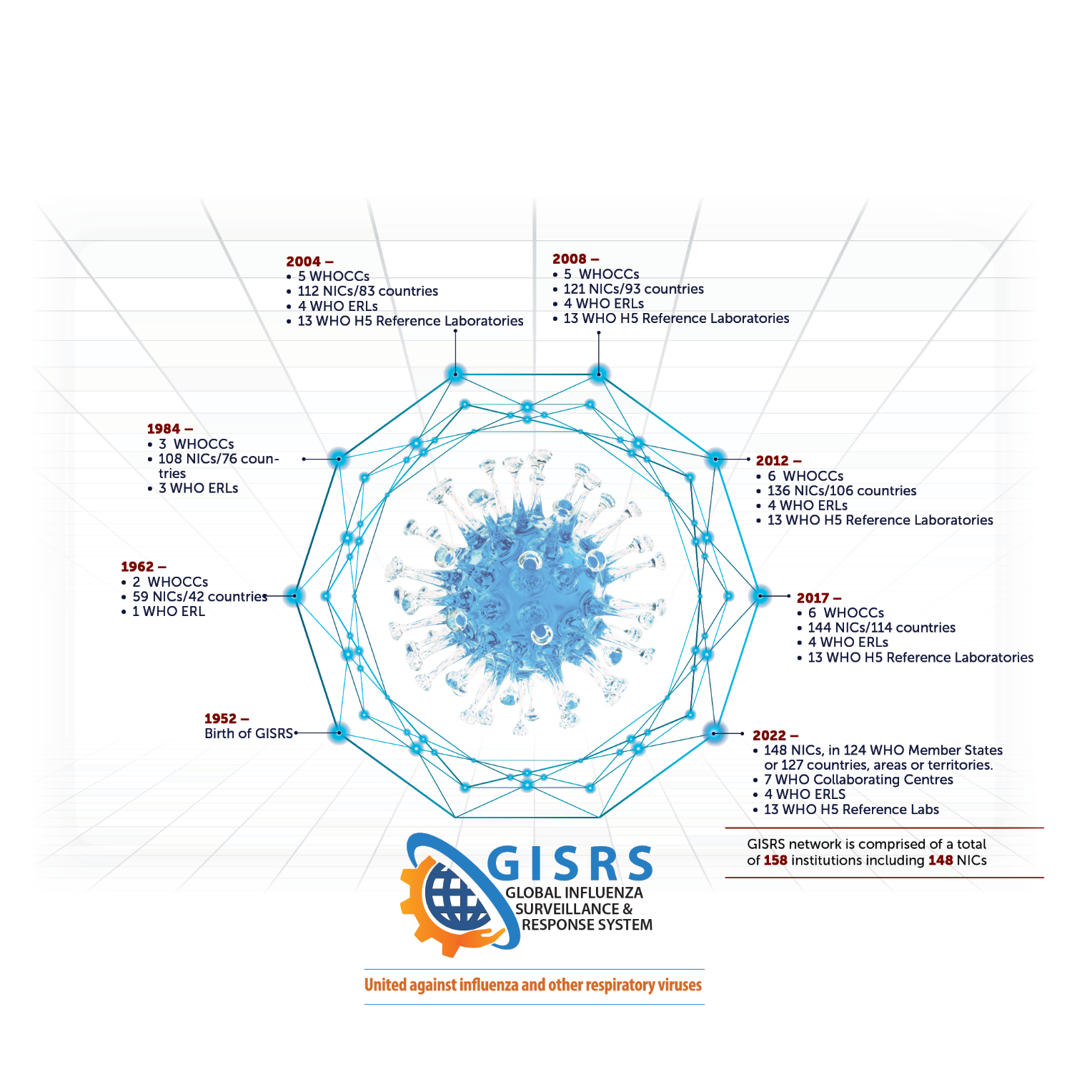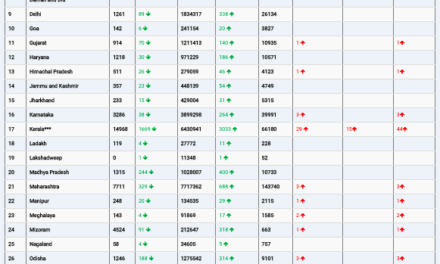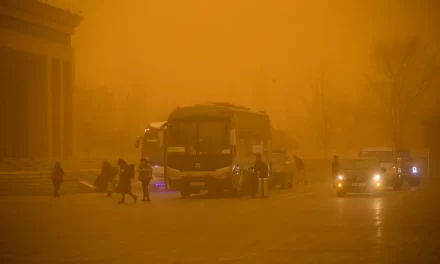Founded in 1952, the Global Influenza Surveillance and Response System, or GISRS, is celebrating 70 years of success as a worldwide network founded to protect people from the threat of influenza, reviewing its added value to other respiratory virus threats including COVID-19, and setting its sights to the future.
GISRS is a proven global network that has provided a first line of defence against influenza for 70 years.
WHO Director-General, Dr Tedros Adhanom Ghebreyesus
Influenza is a serious global health problem that impacts all countries: every year, there are an estimated one billion cases of seasonal Influenza causing three to five million severe cases including up to 650 000 influenza-related respiratory deaths globally. Moreover, new influenza viruses are constantly emerging – these can cause pandemics that lead to widespread societal disruption and millions of deaths.
Influenza viruses constantly evolve into new variants and spread rapidly, similar to SARS-CoV-2, the virus that causes COVID-19. GISRS operates as a network of over 150 laboratories in 127 countries, areas or territories that continuously monitor influenza viruses and diseases globally. Millions of specimens are tested and hundreds of thousands of viruses are exchanged within GISRS every year.
GISRS has made some giant leaps. To list just some of these:
- When GISRS was established in 1952, only 25 countries had some influenza surveillance in place and were able to report data to WHO. Now, more than 127 countries, areas and territories contribute to GISRS.
- As of January 2022, GISRS has grown to include 148 National Influenza Centres (NICs), seven WHO Collaborating Centres (CCs), four Essential Regulatory Laboratories, and 13 H5 Reference Laboratories. It continues growing, and all these institutions form an interactive and complementary global operation.
- Between 2014 and 2019, GISRS tested an average of 3.4 million specimens every year. This surged to 6.7 million tests annually for influenza and 44.2 million tests for SARS-CoV-2 in 2020 and 2021.
- GISRS members share around 20 000 influenza virus samples every year to WHO CCs and regularly update the weekly influenza situation based on laboratory and disease surveillance reporting through the FluNet and FluID systems, thus allowing WHO to distribute timely risk assessments and alerts to countries.
- Based on GISRS surveillance, WHO has been recommending suitable viruses for inclusion in annual seasonal vaccines since 1973. Since 1998, GISRS has made biannual recommendations for seasonal influenza vaccine compositions for the northern and southern hemispheres.
- GISRS operates throughout the year, which enables it to function as a global alert for the emergence of novel influenza viruses and other respiratory viruses of public health significance. It demonstrated its capacity and capability in the rapid detection and response to avian influenza A(H5N1) in 1997 and its re-emergence in 2003, SARS-CoV-1 in 2002, and pandemic influenza A(H1N1) in 2009, in partnership with organizations in the animal sector and other international agencies.
- Although GISRS was built to address influenza, it also serves as a critical resource for countries handling non-influenza emergencies. For the COVID-19 pandemic, GISRS has made significant contributions from the start. For example, GISAID, a long-term partner of GISRS, published the first SARS-CoV-2 sequence data hours after it became available. In many countries, NICs readily became primary hubs for national COVID-19 testing and response. Importantly, GISRS has been conducting integrated sentinel surveillance of influenza and SARS-CoV-2 to guide public health response to the two viruses and associated diseases at the same time.
The GISRS network today is a tribute to several generations of scientists throughout the world who have dedicated themselves to influenza surveillance, preparedness and response. It is also a tribute to many governments that have committed their political, financial and administrative support to the network over the years.
WHO has been developing a roadmap to further expand GISRS into GISRS+: an enhanced network, built upon existing influenza infrastructure, to achieve integrated surveillance and response systems to influenza and a range of other respiratory viruses with epidemic or pandemic potential. This exciting prospect will be the next great leap, as we look to the future.













